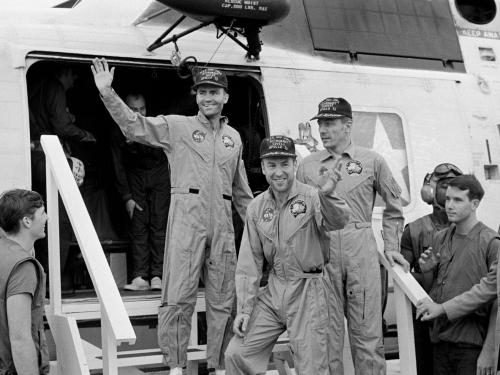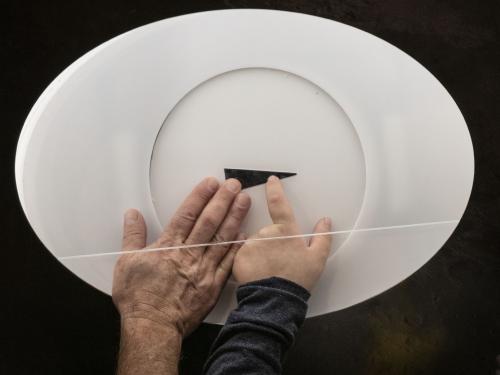

Stories of daring, stories of technological feats, stories of prevailing against the odds ... these are the stories we tell at the National Air and Space Museum. Dive in to the stories below to discover, learn, and be inspired.
Showing 51 - 60 of 176

April 16, 2020
Conservator Lauren Gottschlich explores the conservation work recently done on a replica of the altered lithium hydroxide filter used during the Apollo 13 mission.

April 16, 2020
Space history curator Jennifer Levasseur examines photographs taken during the Apollo 13 mission and how they helped NASA understand what went wrong with the service module.

April 15, 2020
Curator Margaret Weitekamp looks at the history and significance of one of our most iconic artifacts from the mission: Gene Kranz's white vest.

April 14, 2020
On Monday, April 13, the 50th anniversary of "Houston, we've had a problem," the Museum's Apollo curator Teasel Muir-Harmony participated in a Reddit Ask Me Anything (AMA) on r/space with NASA Chief Historian Bill Barry, and Apollo in Real Time creator and data visualization engineer Ben Feist.

March 19, 2020
Alfred "Al" Worden, command module pilot on Apollo 15, passed away on March 18, 2020. We mourn the loss and celebrate the life of Al, an aviator, engineer, and storyteller. From the halls of West Point to the far side of the Moon, the legacy of history’s first deep-space walker continues to inspire.

February 03, 2020
Conservation of Michael Collins' razor from the Apollo 11 mission presented conservators with a complex ethical dilemma for deciding the best treatment approach: how to arrest degradation while maintaining the historical elements of the artifact.

December 03, 2019
In the over 40 years our lunar touchrock has been on display, millions of people have walked through our doors and touched a piece of the Moon. Intrigued by this idea, staff photographer Jim Preston took over 60 photos of visitors touching our little piece of the Moon.

September 16, 2019
Not long after the successful Apollo 11 mission, its three crew members were invited to speak to Congress. In this guest blog, Apollo 11 command module pilot, and former director of the National Air and Space Museum, Michael Collins recalls those remarks.

September 12, 2019
In the late 1960s, Poppy Northcutt was a return-to-Earth specialist with TRW, working on a contract with NASA on one of the most exciting adventures of the 20th century: humanity’s quest for the Moon. With computer programming skills and a degree in mathematics, she worked with her team at TRW on the development of the return-to-Earth program. And she became the first woman in Mission Control.

August 08, 2019
Today we’re talking about a really cool project that brought together one former-Mythbuster, a couple of Smithsonian units, and makers across the country to reimagine an incredible piece of Apollo engineering.